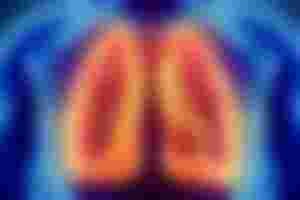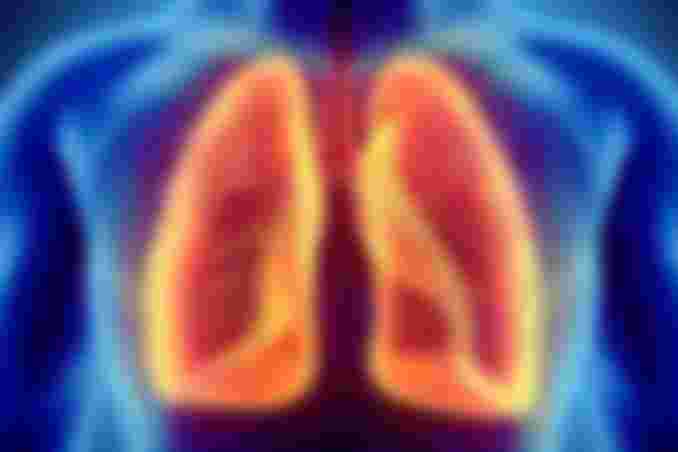WHAT an interesting story their lungs could tell, if only they could talk!

Not only can they provide amazing facts about their size and delicate design, but they can also describe how they work and the struggle they sometimes face to keep you alive. But since your lungs don't speak, you have to get your compelling story from outside scientists.
You can survive without food for weeks. Some have fixed forty or fifty days. And you can go days without water, which was the experience of chestnuts in the middle of the salty sea. But you can't go more than a few minutes without breathing. It is so important that your lungs are for you.
Most people just enjoy their lungs, and for many people, they work quietly and efficiently most of the time from cradle to grave. In fact, when your lungs burst, you're already in trouble. Therefore, you need to think about it and take care of it before it is too late.
The lungs are two conical or pyramidal organs that weigh about a kilogram and a half each in adults. In men, they represent a thirtieth body weight, in women forty. Your right lung is made up of three sections or lobes; his left has only two lobes due to the space the heart takes up in the chest. At birth your lungs are pinkish white, but over the years they turn a mottled slate gray and in old age they may even have black spots. While both of your lungs can hold six to seven liters of air, that doesn't mean they are large, hollow organs, like the bellows. If you open them, you will find that they look like a foam sponge.
The air you breathe passes through your nose and mouth, then passes through your throat, larynx and windpipe or windpipe. The trachea branches into two tubes, called bronchi, which enter halfway to the back of each lung. The trachea and bronchi are surrounded by thick cartilage rings, so that no crushing of foreign bodies can interrupt the flow of air to the lungs.
The two main branches or bronchi, when they reach the lungs, divide into four branches, all four into eight, and so on about twenty times more, until there are a million or more of these small branches called bronchioles. The smallest of them are no more than a hundredth of an inch in diameter. At the end of the bronchioles, there are air sacs with small, cup-shaped protrusions called alveoli. There are up to 300 million of them in your lungs; some estimates go as high as 750 million. These small cells, if dispersed, would cover an area of one hundred square meters or more.
Each of these small alveoli is covered with a network of capillaries. Through the walls of these small capillaries, oxygen comes into contact with the blood so that the body's cells, in turn, receive oxygen for energy. Oxygen is carried to cells throughout the body along with hemoglobin in red blood cells. If placed at the end, these capillaries extend for hundreds of kilometers. By the way, these capillaries are large enough to allow one red blood cell to pass at a time.
Of course, the flow of oxygen and carbon dioxide through the walls, from alveoli to bodies, is at a much shorter distance than the thinnest paper you've ever seen - less than a thousandth of a millimeter!
In a year, the lungs inhale two to five million liters of air. When full, they contain six to seven liters of air. But when you breathe out, there is usually two liters of air left, although you can intentionally exhale to the point where you only have a quarter of air left. When you relax, relax on a sofa or anatomical chair, you can only inhale half a liter at a time, ten to fourteen times per minute or five to seven liters of air per minute. But when lifting heavy objects or exercising hard, you can inhale up to 80-120 liters of air per minute, breathing more deeply, not so much.
To understand how your lungs are used to provide air, you need to understand another fact about them. Each lung is surrounded by a "skin" called "pleura" which is hermetic. That's why you can take a freshly removed lung from an animal and inflate it like a ball or soccer ball, pumping air through the windpipe. Additionally, each of your lungs is located in an airtight cavity that has its own skin-like pleura.
How to breathe
There are two basic forms of respiration through which the lungs are filled and emptied: voluntarily and involuntarily. Your heart and stomach are limited to involuntary actions, you can not deliberately speed up or slow down your activities. On the other hand, your limbs, your lips and your tongue act more or less according to your will or the habits you adopt. But your lungs can do both voluntary and involuntary action. In voluntary breathing, dilute the ribs and lower the membrane and draw more air into the lungs.
Involuntary breathing is controlled by a "breathing center" in the lower part of this part of the brain, known as the spinal cord. It stimulates the contraction of the membrane, which causes it to lower and at the same time move the ribs upwards and outwards. The result is a relative vacuum, a lower air pressure in the lungs than outside. This causes the outdoor air to enter the lungs. Other nerve centers regularly interrupt this contraction action, allowing the pectoral muscles to relax and expel air from the lungs.
Interestingly, this "breathing center" is not activated by the lack of oxygen in the lungs, but by the amount of carbon dioxide in the blood. The more carbon dioxide there is in the blood, the greater the risk, and therefore the "breathing center" increases the respiratory process to prevent the carbon dioxide content from reaching the risk point. There is usually only a 1% fraction of carbon dioxide in the air when it is inhaled. About 21% of the air we breathe is oxygen, but when it exits it still contains 16%. So you see, your lungs remove only a quarter of the oxygen from the air. Carbon dioxide increases proportionally, so that exhaled air contains more than 4% carbon dioxide.
Air conditioning
Of course, the air must be perfect for the lungs to do their part well. It should be clean, moist and at the right temperature. And for this the creator of the human body gave him what men decide to call "the upper respiratory tract." All the tubes through which the air circulates before they reach the lungs help to fulfill these three essential conditions. The nose has relatively long hairs that catch larger particles of dirt, which can be loaded with bacteria. Their ducts are also lined with mucous membranes that are shaped to trap small particles. Even the smallest particles are caught by the hairy, hairy, mucous-covered ridges in the wind pipe that swing like wheat in the field. This movement gradually pushes the particles down the throat, where they can be swallowed or spat out. White blood cells take care of all the small bacteria that break through these defenses.
It is also provided by various glands and ducts with moist air to give the air the right amount of humidity. This is very important because oxygen and carbon dioxide must be moist before it can pass through the red blood cells and small alveoli. Again, the air must also have the right temperature. For this reason, air ducts are ideally designed to heat very cold air and cool very hot air; both ends will damage the sensitive membranes of the lungs. The enormous efficiency of the body's upper airways is obvious when one sees that humans can survive the scorching heat of tropical deserts and the freezing temperature of Antarctica.
Prevention is better than cure
Because the lungs only warn you when they are in trouble, it is wiser to take care of them before then. Or, as they say, "one point in time saves nine." Of course, if a person is serious about his health and especially his lung condition, he will not smoke. Quitting smoking is good not only for the lungs but also for the heart and liver. And if you could choose to live where air pollution is minimal, your lungs would also appreciate it.
Among the things you can do to keep your lungs healthy is enough exercise. Of course, if you are a walking mailman or a construction worker, you don't have to worry about that whether you are a housewife with a large house and a family to support. But if you're one of the many workers who sit in a desk or workbench all day, you should consider doing some extra exercise. This exercise, for the sake of the lungs, should be vigorous enough that you can breathe deeply, as long as your heart is strong enough to take it. Climbing stairs instead of using elevators, with the exception of a large number of stairs, is a form of training that does not require a lot of extra time. Making it a habit will ensure consistency. To be useful, training must be regular.
Another popular form of exercise is jogging, a relaxed and calm way to run. But an activity that also stimulates the mind can be better. Less demanding sports include tennis, table tennis or table tennis, and swimming. Exercising the lungs by deep diaphragmatic breathing should not be neglected. Instead of breathing deeply, filling the chest, breathe deeply as you lower the diaphragm. This will be especially useful for the lower alveoli. It is especially helpful to breathe out as carefully as possible several times a day. It has been correctly called "cleansing" of the lungs. Think for a moment about deep breathing and vigorous exhalation when leaning on the sofa or bed when not sleeping. It might also have an added benefit if it distracts you from worries or focuses on grievances or other harmful thought patterns. Deep breathing often makes you feel better physically and emotionally.
When something is wrong
There are a lot of things that can go wrong with your lungs. There is bronchitis, inflammation of the bronchi. Pleurisy develops when the pleural wall of the chest cavity or the pleura surrounding the lungs becomes inflamed. It is said that there are many types of pneumonia, which differ depending on what is involved or the type of infection. Economic and environmental conditions can make you more vulnerable to TB. Lung cancer appears to be on the increase, as does emphysema. What is emphysema? It is the end result of a series of airways, like asthma, where the small alveoli dilate and their function deteriorates. Patients with emphysema have difficulty releasing the air they have inhaled. Common cold, hay fever, asthma and sinusitis are also diseases that affect the lungs.
There are many remedies for these different types of illnesses, both orthodox and unorthodox from a medical point of view, and it seems best to look at them with an open mind, as no system seems to have all the answers. But as mentioned above, prevention is the best way. Think about healthy habits while you are healthy and before your lungs alert you to your presence. If possible, choose a healthy environment to work and live, with less air pollution. Do not smoke tobacco; do not abuse alcoholic beverages. Avoid extremes whether you are eating, working, or looking for pleasure. Learn to be moderate in all things and be content with what you need: food, clothing, and protection.

Good care should be taken